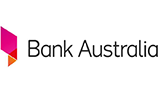When to refinance your home loan
Interest rates have dropped below your current rate
Interest rates have fallen well below your current variable rate, meaning you could potentially secure a lower rate and reduce your monthly repayments. Just make sure the savings outweigh any switching costs.
You’re approaching a fixed rate cliff
When your fixed-rate term ends, your loan typically reverts to your lender’s standard variable rate, which is often much higher than the most competitive rates available on the market. Instead of copping the sudden jump in repayments, you could refinance to a better deal.
You want to lock in a fixed rate
If interest rates are at a low point in the cycle and tipped to increase, you might consider switching to a fixed rate home loan. Locking in can help you secure a lower rate and shield yourself from future repayment hikes.
You’ve built up equity in your home
Rising property values and consistently making your mortgage repayments will improve your loan-to-value ratio (LVR). This stronger position may help you qualify for a lower interest rate or better loan features when refinancing.
You want to consolidate high-interest debt
Rolling personal loans or credit card debt into your mortgage can simplify your finances and reduce interest costs. Rather than paying repayments on multiple high-interest debts, consolidating makes it easier to manage with a single monthly repayment, often at a lower interest rate.
You need funds for major expenses
A cash-out refinance lets you tap into your home equity to access funds for big costs like renovations, education, or even a deposit for an investment property. It can be a cost-effective way to borrow, provided the new loan amount and repayments still align with your budget.
Your credit score has improved
An improved credit score may help open doors to better loan options and lower interest rates. Refinancing lets you move from bad credit lenders to more competitive products, potentially saving you money and giving you access to features, like redraw or offset.
You’re going through a divorce or separation
Refinancing may be necessary to remove a partner from the loan or buy out their share of the property. It can also help restructure the loan to reflect your new financial situation and responsibilities.
Akos’s story: Refinancing at the right time made a big difference

Akos from Woodford, NSW
“We wanted to refinance to a lower rate and unlock equity in our home for a variety of needs and opportunities. Refinancing can be daunting – especially if you run your own business and have a complex financial situation like we do – but the team at Money.com.au were exceptionally helpful. They were excellent communicators, told us exactly what information we needed to provide, and then handled the rest. I can’t recommend them highly enough. They found a bank willing to work with our complex financial situation, which allowed us to unlock equity in our home.”
Akos from Woodford, NSW
Another reason to refinance may be that you’re not happy with your current lender and the level of service you’ve received. Having access to a banking app with everything you need at your fingertips – or the ability to speak with a real person – can make a big difference.
When not to refinance your home loan
Your LVR is greater than 80%
If you’re borrowing more than 80% of your property’s value, you’ll likely need to pay for lender’s mortgage insurance (LMI), even if you’ve already paid it on your current mortgage. There’s also a strong likelihood lenders won’t offer you their best rates if your loan-to-value ratio (LVR) is above 80%.
There are high fees attached
The cost of refinancing could mean that the benefits don’t outweigh the fees. Potential costs can include valuation fees ($50-$600), new loan set-up fees (up to $750) and exit fees ($350-$500). A mortgage broker may be able to help you negotiate lower costs or have some fees waived altogether.
You’re on a fixed rate
There will be higher break costs compared to a variable rate loan. However, if your fixed rate is particularly high relative to the best home loan rates available, it might still be worth it. It may pay to speak to a mortgage broker in this instance.
You’re close to paying off your mortgage
If you’re near the end of your loan and only have a small balance left – say, $100,000 – it may not be worth refinancing. That’s because the potential savings might be small compared to the costs involved. Some lenders may also be less willing to refinance small loan amounts. In this case, it might be better to ask your current lender for a lower rate instead.
If your circumstances have shifted in a way that could make loan approval harder, refinancing might not be the right move – at least for now. This could include recently taking on new debt, like a car loan, or experiencing a drop in income. Lenders may view you as a higher risk, which could limit your options, result in less competitive rates, or in some cases, lead to outright rejection.
How often can you refinance?
You can refinance as often as you like, but it’s generally best to review your home loan once a year and consider refinancing every 2-3 years. Since refinancing involves paperwork and approval time, you’ll want to make sure the potential savings or benefits outweigh the costs and effort of kickstarting the process.
Refinancing too frequently can raise red flags with some lenders, as it could indicate financial problems or other concerns. After all, it’s in their best interest to keep you as a customer, so a track record of switching within six or 12 months might work against you when applying for a new home loan.
Your reasons for switching mortgages should be crystal-clear because it can also impact your credit score temporarily. You’ll need to keep this in mind if you’re planning to make other financial applications soon, like a credit card or personal loan.

Mansour Soltani, Money.com.au’s Home Loans Expert
“It’s best to get your finances in order at least six months before refinancing. This means having no missed payments on bills, credit cards, loans or extravagant spending. Lenders will also look at how you manage your money, including any frequent or unusual cash withdrawals, to assess if you can service the new loan. They also tend to favour borrowers taking out larger loans – typically $800,000 or more – so you may be offered better rates and terms if you're in that category.”
Mansour Soltani, Money.com.au’s Home Loans Expert
A recent Money.com.au survey found that one in three Australians (33%) would only consider refinancing if interest rates dropped by at least 1.00%. Another 23% said a 0.50% drop would be enough, while 22% would act at a 0.75% reduction. Just 10% would consider switching for a 0.25% cut, and 8% weren’t sure.

When is refinancing worth it?
We explore whether refinancing a home loan is worth it if the interest rate is only marginally lower.
You might need to refinance to a much lower interest rate for it to make a real difference. This is because the savings you get from a lower rate can be eaten away by the fees involved in refinancing.







